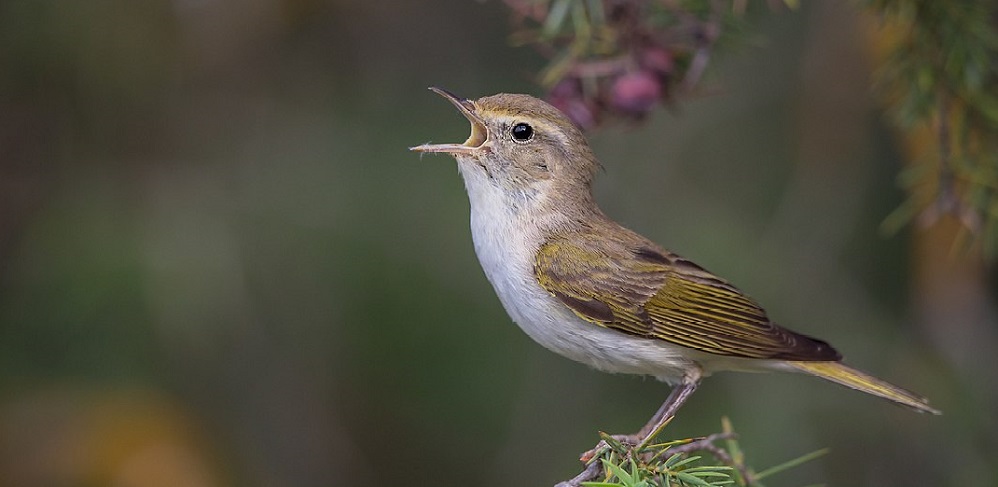
species of the week #6 -Western Bonelli’s warbler
The western bornelli’s warbler belongs to the long-distance-pullers and spends the winter south of the Sahelzone. It occurs predominantly in the Mediterranean-area; the Palatinate, Bavaria and Baden-Wuerttemberg represent the northern border of the spread.
| Distribution status | Extremely rare, less than five specimens in Rhineland-Palatinate |
| Remaining deposits | in Bavaria and Baden-Württemberg |
| Last sighting in Rhineland-Palatinate | 2017 in the Otterberg municipality |
| Habitat | sunny forest slopes on mountain ridges up to 2000 m height |
| Threat of | scrub encroachment, insect mortality, climate change, light pollution |
The western bornelli’s warbler lives from spiders, mollusks, insects and their larvae and builds its nest on the ground between gaping hedge. Due to increasing eutrophication, especially by air pollutants, more and more bushes grow on the preferred barren sunny slopes, leaving no free ground space.
On the way to its winter quarters it flies especially at night, because then it is cooler and some predators are sleeping. It orientates itself by the stars. If he now passes cities on his journey that shine brighter at night than the starry sky, he loses his orientation. Particularly when it is foggy or hazy, light bells form already over smaller settlements.
Another problem is the loyalty of the warbler, which returns to its old territory every spring. If this was destroyed or strongly changed, only very few mountain-singers find a new precinct.
The decline of the insects leads to food shortage and causes problems for the small bird especially on the way between summer and winter quarters.
Politically necessary:
- Effective Europe-wide limitation of light pollution
- Prohibition of all insecticidal poisons
- Mobility turnaround to reduce air pollutants
Song listen in the animal voice archives of the natural history museum Berlin
